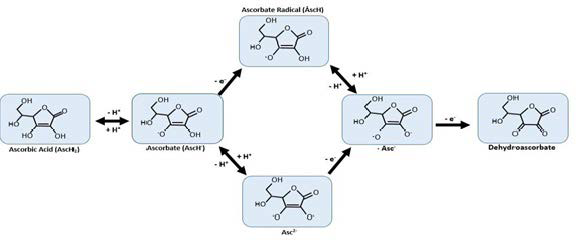1.Roudebush P, Zicker SC, Cotman CW, et al. Nutritional management of brain aging in dogs. J Am Vet Med Assoc. 2005; 227(5): 722-728. doi: 10.2460/javma.2005.227.722
2. Neilson JC, Hart BL, Cliff KD, Ruehl WW. Prevalence of behavioral changes associated with age-related cognitive impairment in dogs. J Am Vet Med Assoc.. 2001; 218: 1787-1791. doi: 10.2460/ javma.2001.218.1787
3. Bain MJ, Hart BL, Cliff KD, et al. Predicting behavioral changes associated with age-related cognitive impairment in dogs. J Am Vet Med Assoc. 2001; 218(11): 1792-1795. doi: 10.2460/javma.2001.218.1792
4. Cotman CW, Head E, Muggenburg BA, et al. Brain aging in the canine: A diet enriched in antioxidants reduces cognitive dysfunction. Neurobiol Aging. 2002; 23(5): 809-818. doi: 10.1016/S0197- 4580(02)00073-8
5.Youssef SA, Capucchio MT, Rofina JE, et al. Pathology of the aging brain in domestic and laboratory animals, and animal models of human neurodegenerative disease. Vet Pathol. 2016; 53(2): 327-348. doi: 10.1177/0300985815623997
6.Dror Y, Stern F, Gomori MJ. Vitamins in the prevention or delay of cognitive disability of aging. Curr Aging Sci. 2014; 7(3): 187-213. doi: 10.2174/1874609808666150201214955
7. Takeuchi Y, Uetsuka K, Murayama M, et al. Complementary distributions of amyloid-β and neprilysin in the brains of dogs and cats. Vet Pathol. 2008; 45(4): 455-466. doi: 10.1354/vp.45-4-455
8.Czasch S, Paul S, Baumgartner W. A comparison of immunohistochemical and silver staining methods for the detection of diffuse plaques in the aged canine brain. Neurobiol Aging. 2006; 27(2): 293- 305. doi: 10.1016/j.neurobiolaging.2005.02.017
9. Dickson DW. Neuropathological diagnosis of Alzheimer’s disease: A perspective from longitudinal clinic-pathologic studies. Neurobiol Aging. 1997; 18(4): S21-26. doi: 10.1101/cshperspect. a006189
10.Tapp DP, Siwak CT, Gao FQ, et al. Frontal lobe volume, function and β-amyloid pathology in a canine model of aging. J Neurosci. 2004; 24(38): 8205-8213. doi: 10.1523/JNEUROSCI.1339-04.2004
11. Borras D, Ferrer I, Pumarola M. Age-related changes in the brain of dog. Vet Pathol. 1999; 36(3): 202-211. doi: 10.1354/vp.36- 3-202
12.Head E, Liu J, Hagen T, et al. Oxidative damage increases with age in a canine model of human brain aging. J Neurochem. 2002; 82(2): 375-381. doi: 10.1046/j.1471-4159.2002.00969.x
13. Aiken C, Kaake R, Wang X, Huang L. Oxidative stress-mediated regulation of proteasome complexes. Mol Cell Proteomics. 2011; 10(5): doi: 10.1074/mcp.M110.006924
14.DeCoursey T, Ligeti E. Regulation and termination of NADPH oxidase activity. Cell Mol Life Sci. 2005; 62(19-20): 2173-2193. doi: 10.1007/s00018-005-5177-1
15.Schreck R, Baeuerle P. A role for oxygen radicals as second messengers. Trends Cell Biol. 1991; 1(2-3): 39-42. doi: 10.1016/0962- 8924(91)90072-H
16.Ignarro L, Cirino G, Casini A, Napoli C. Nitric oxide as a signaling molecule in the vascular system: An Overview. J Cardiovasc Pharmacol. 1999; 34(6): 879-886.
17. Harman D. Aging: A theory based on free radical and radiation chemistry. J Gerontol. 1956; 11(3): 298-300. doi: 10.1093/ geronj/11.3.298
18. Nimse SB, Pal D. Free Radicals, natural antioxidants, and their reaction mechanisms. RSC Advances. 2015; 5: 27986-28006. doi: 10.1039/c4ra13315c
19.Uttara B, Singh AV, Zamboni P, Mahajan RT. Oxidative stress and neurodegenerative diseases: A review of upstream and downstream antioxidant therapeutic options. Curr Neuropharmacol. 2009 7(1): 65-74. doi: 10.2174/157015909787602823
20.Prescription Diet Canine b/d, Hill’s Pet Nutrition Inc, Topeka, Kansas.
21. Purina Pro Plan Bright Mind Adult 7+, Nestle Purina Petcare Co, St. Louis, Missouri. 22. Padayatty SJ, Katz A, Wang Y, et al. Vitamin C as an antioxidant: Evaluation of its role in disease prevention. J Am Coll Nutr. 2003;
22(1): 18-35. doi: 10.1080/07315724.2003.10719272
23. Milgram N, Zicker S, Head E, et al. Dietary enrichment counteracts age-associated cognitive dysfunction in canines. Neurobiol Aging. 2002; 23(5): 737-745. doi: 10.1016/S0197-4580(02)00020-9
24.Milgram N, Head E, Zicker S, et al. Long-term treatment with antioxidants and a program of behavioral enrichment reduces agedependent impairment in discrimination and reversal learning in beagle dogs. Exp Gerontol. 2004; 39(5): 753-765. doi: 10.1016/j. exger.2004.01.007
25.Milgram NW, Head E, Zicker SC, et al. Learning ability in aged beagle dogs is preserved by behavioral enrichment and dietary fortification: A two-year longitudinal study. Neurobiol Aging. 2005; 26(1): 77-90. doi: 10.1016/j.neurobiolaging.2004.02.014
26.Nippak PM, Mendelson J, Muggenburg B, Milgram NW. Enhanced spatial ability in aged dogs following dietary and behavioral enrichment. Neurobiol Learn Mem. 2007; 87(4): 610-623. doi: 10.1016/j.nlm.2007.01.001
27.Milgram NW, Head E, Muggenburg B, et al. Landmark discrimination learning in the dog: Effects of age, an antioxidant fortified food, and cognitive strategy. Neurosci Biobehav Rev. 2002; 26(6): 679- 695. doi: 10.1016/S0149-7634(02)00039-8
28.Siwak CT, Tapp PD, Head E, et al. Chronic antioxidant and mitochondrial cofactor administration improves discrimination learning in aged but not young dogs. Prog Neuropsychopharmacol Biol Psychiatry. 2005; 29(3): 461- 469. doi: 10.1016/j.pnpbp.2004.12.011
29.Head E, Zicker SC. Nutraceuticals, aging, and cognitive dysfunction. Vet Clin North Am Small Anim Pract. 2004; 34(1): 217-228. doi: 10.1016/j.cvsm.2003.09.007
30.Opii WO, Joshi G, Head E, et al. Proteomic identification of brain proteins in the canine model of human aging following a long-term treatment with antioxidants and a program of behavioral enrichment: Relevance to alzheimers disease. Neurobiol Aging. 2008; 29(1): 51-70. doi: 10.1016/j.neurobiolaging.2006.09.012
31. Snigdha S, Rivera CD, Milgram NW, Cotman CW. Effect of mitochondrial cofactors and antioxidants supplementation on cognition in the aged canine. Neurobiol Aging. 2016; 37: 171-178. doi: 10.1016/j.neurobiolaging.2015.09.015






